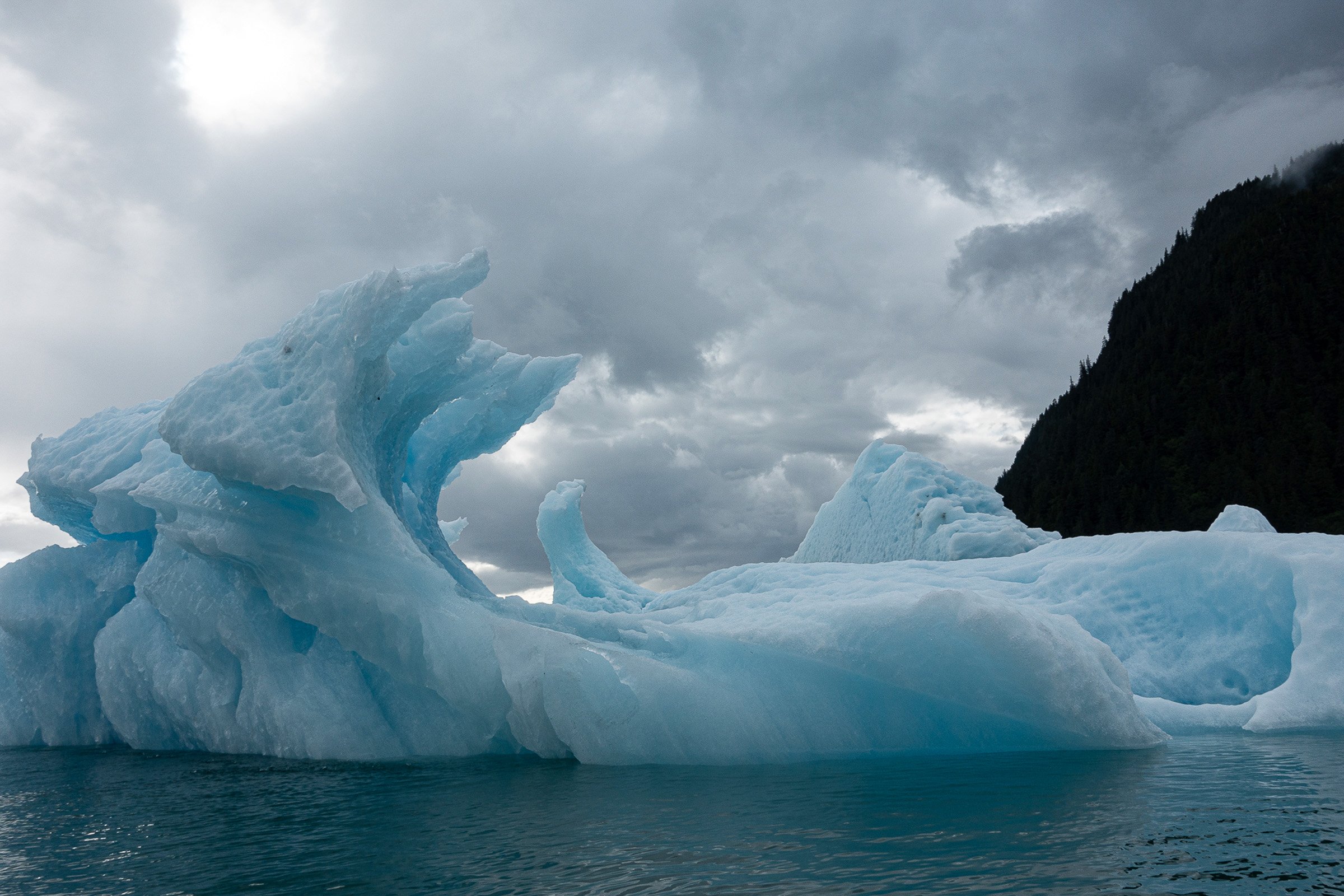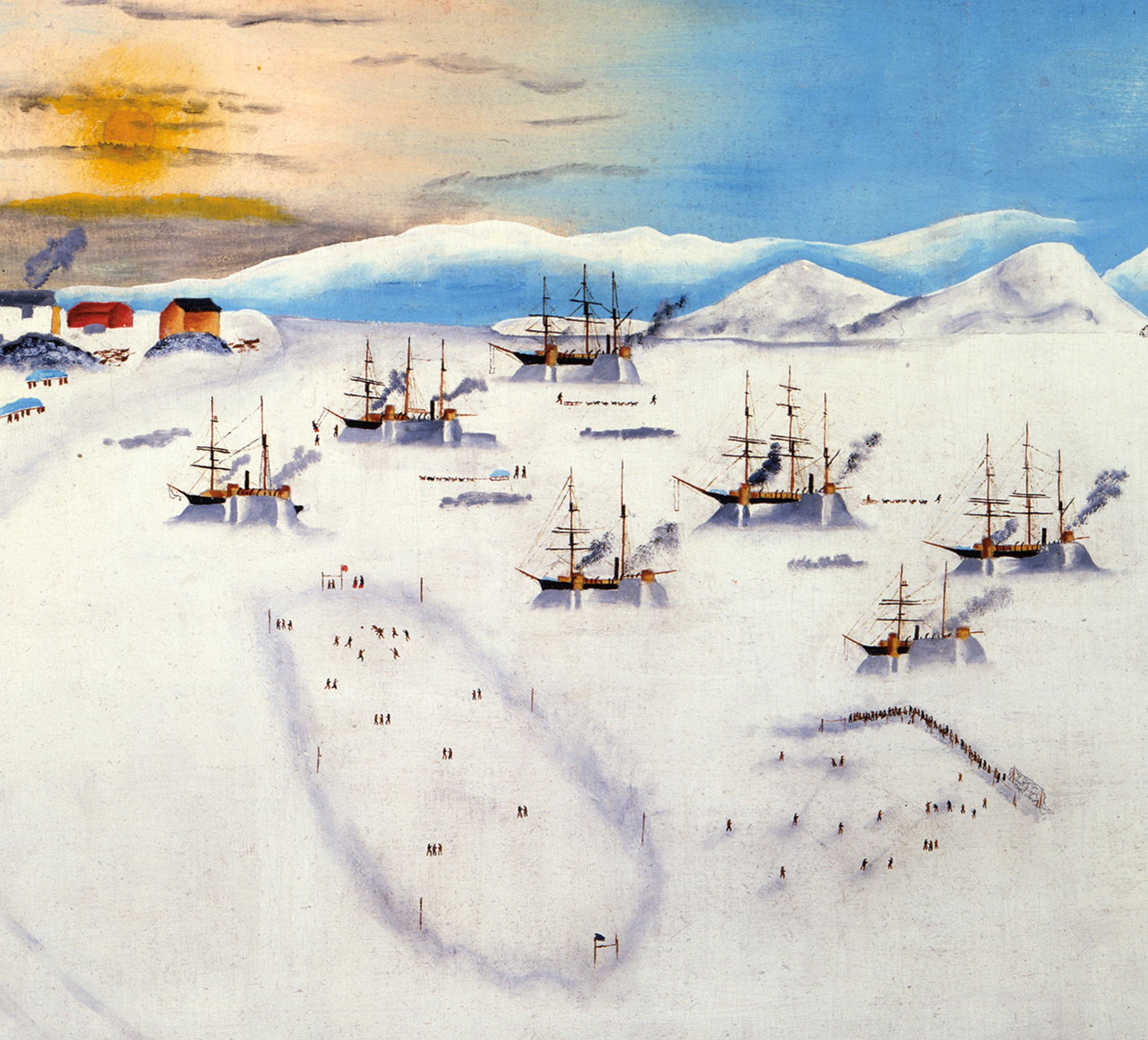The Story-Map
As our map came together, and we started digging into stories and photographs that we might include, I realized that we fishermen had special knowledge - that all the years that we struggled up and down the Inside Passage in our little boats and put together long salmon seasons gave us unique perspective and insight into the rich but rapidly changing culture of the coast.
Seymour Narrows was the perfect example. The narrowest part of the Inside Passage a hundred miles north of Vancouver, it was the site of a ship killer rock. I’d quizzed passengers on the streets of Ketchikan and discovered that no one had heard of it.
To us fishermen the story of the three million pounds of dynamite that it took to blast Ripple Rock out of the middle so that ships could safely pass was legend.
The grizzled old guy who told me about it on the docks of Ketchikan in 1965 had gone through in 1954 when the rock was still there, said his skipper had a dying wife, couldn’t wait until slack water when it was safe. Said some of the whirlpools they dodged were 25’ deep!
Or the stormy passage of the Alaska ferry in Queen Charlotte Sound, when two big trucks broke their chain binders, and slid back and forth demolishing the vehicles around them. It happened near the Egg Island lighthouse where a 1948 storm wave had blown the whole lighthouse off its foundations and into a nearby ravine. The keepers were lucky were to survive, moving into the chicken coop and eating eggs and their pet rabbit until help came.
Yuculta Rapids was another: a violent maelstrom when the tide was running hard but popular with small craft every six hours at high or low tide when the current stopped briefly. Even whales, we’d been told, waited until slack water. No one had heard of that either.
In the spring of 1982, I stopped our boat in Namu, the cannery that gave its name to the first orca to be captured and displayed - in the Seattle Aquarium. It was humming: deeply loaded herring boats at the docks, the roar of the fish pumps, the throb of the generators: canneries like Namu were the beating heart of coastal British Columbia. But it was also history in the making - when the herring boom was over a few years later, Namu and her sister canneries up and down the coast were already disappearing into the forest.
I got to know the lighthouse keeper at Boat Bluff in B.C.; he would e-mail me of local doings.
One fall we stopped at lonely Butedale, a village/cannery probably 50 miles from the nearest human, all lit up, as if it were still going full speed ahead. Discovered just three people - caretakers - were still there, trying to keep the water powered generators going, somehow keep the whole place from falling into the bay.
We realized that essentially, we fishermen were curators/caretakers of these and other coastal legends, about which, in numerous cases, little was written.
Some of the stories that we touch on lightly, like the one on the top left of the map of all of Alaska, are worth drilling down deeper on. This was in the sunset years of Arctic whaling when this Englishman, Little Joe Tuckfield, married to an Eskimo and steeped in native culture, took off in an open boat with an Eskimo crew and headed east from Point Barrow, seeking undiscovered whaling grounds and places where a ship might winter without getting crushed by the pack ice. A year later he returned with riveting news - a protected harbor at Herschel Island with lots of driftwood for winter heat.
And so began the final era of Arctic whaling when as many as half a dozen big steam/sail whalers would travel east in late summer, get frozen in, bank snow around the ships for insulation and settle in for the winter complete with baseball, socializing between boats to make the days go faster and emerge, hopefully, from the ice in May, to seek the bowhead whale.
Or, nearby, the paragraph about the fleet trapped in the ice - barely scratches the drama of the Great Whaling Disaster of 1871 when thirty-three American whaling ships were crushed by the ice, forcing a miracle-like escape for the 1200 plus men who pushed whaleboats across the ice and rowed them through the water for almost 70 miles to get to seven whalers that had escaped the ice.
In the spring of 2012, I became acquainted with a filmmaker, Dan Kowalski who had the same passion for Alaska as I had, with fortunately a boat and a homestead close to some of Alaska’s most dramatic sights. We began spending a week a year exploring Alaska’s hidden and secret places. In the winter, between Dan and my studios, we’d hone the videos, add music, to try to really create something special, to equal the places where we had filmed them.
As Dan and I worked on making videos, it became clear to me that in certain cases, video was the best way to tell a particular story. A good example is a video called Mile 485 - Finding Bishop Bay (a totally remote and isolated hot spring.) The music and the maps with a moving line to show our route gave a much deeper sense of the moody feeling of a trip south in the fall along with the magic of finding a remote hot springs than simply text and photos would have done.
Then in fall of 2022 a real Eureka! moment: QR codes. We discovered that we could create codes and print them directly onto the map, allowing users to simply point their smart phone at the QR code and in an instant, their smartphone or tablet would be playing our video, complete with sound: very exciting!!
Through this tedious process were able to create a truly unique product - a map with numbered cruise routes allowing “We are now at Mile 745 on your map,” etc. As well as accessible videos in which we are able to share some of our favorite stories about this remarkable part of the world.
As you can see there are basically almost innumerable great Alaska/Northwest coast stories out there to be ferreted out and curated into videos or perhaps just text and photos.
We are excited about what we have created with this map as well as the potential for future maps. We hope you enjoy what we have created.
Images: Herschel Island by John Bertonccini, Whaler Alexander, at Cape Prince of Wales, May, 1903, University of Wa. Nowell 31
More Stories!





